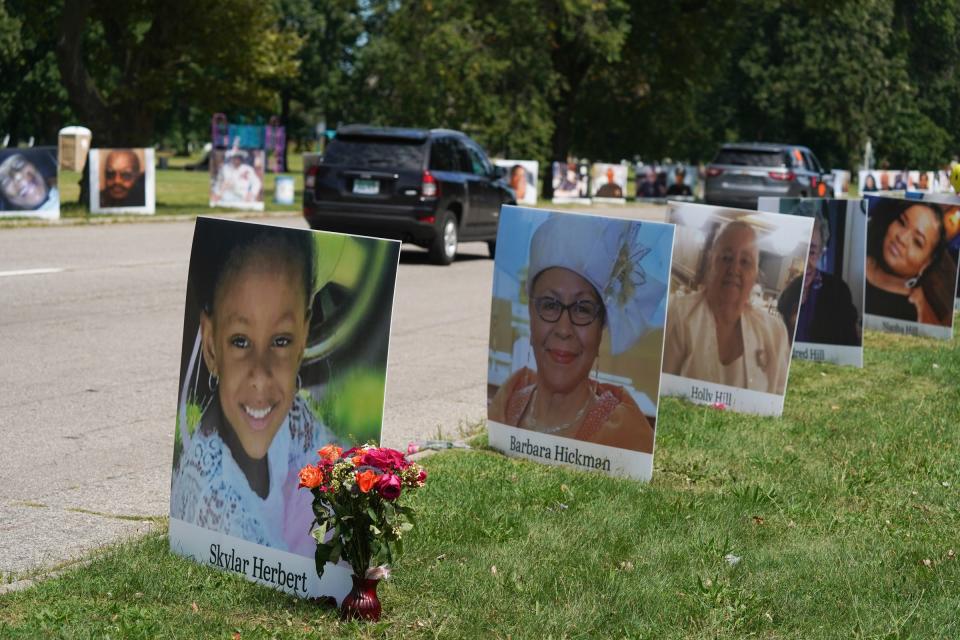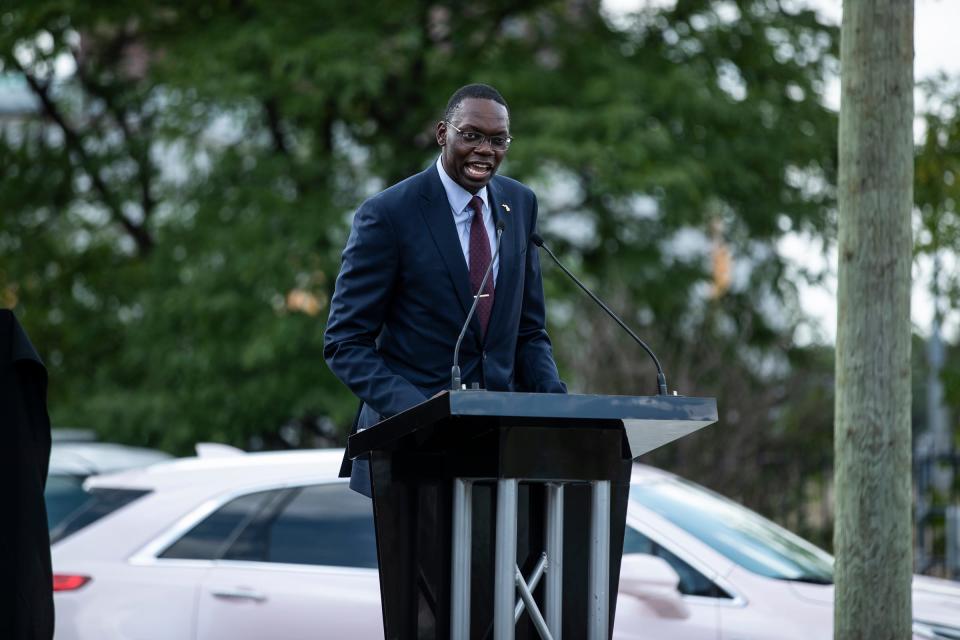Report: Michigan closed the gap on COVID-19 racial disparities
Early in the coronavirus pandemic, it became clear that Michigan had a problem: Black residents were getting infected by the virus and dying at far higher rate than white Michiganders — representing more than 40% of deaths from COVID-19 in March and April of 2020, while making up just 13.6% of the state's population.
“When we saw that COVID-19 was uniquely lethal in communities of color in Michigan, Governor (Gretchen) Whitmer and I knew we had to act quickly,” Lt. Gov. Garlin Gilchrist II, chair of the Michigan Coronavirus Racial Disparities Task Force, said in a statement. “We responded to these disturbing racial disparities with an innovative approach that put Michiganders first and set a national example for other states and the federal government to follow."

How Michigan worked to cut Black death rate from COVID
In April 2020, the governor issued an executive order launching the Michigan Coronavirus Racial Disparities Task Force — enlisting diverse leaders in government, academia, health care, economics, public health, epidemiology, education and the private sector — to address the disparities and try to close the gap.
A final report from that group, released Monday, shows the efforts paid off.
The COVID-19 mortality rate was nearly double for Black Michiganders in 2020 compared with the mortality rate for white residents. Data from the Michigan Disease Surveillance System shows 22.8 per 10,000 Black residents died from the virus that year, compared with 11.8 per 10,000 white Michiganders.

More:Fewer Black Michiganders are dying of COVID-19, but more work is needed, task force says
More:Wayne County, Detroit account for 47% of state's coronavirus cases
But by expanding testing in communities of color; improving access to health care, coronavirus treatments and vaccines; distributing free personal protective equipment, and other efforts, the mortality rate among Black Michiganders fell to 16.8 per 10,000 in 2021.
And by 2022, the gap had closed the mortality rate among Black residents altogether. It fell to 8.6 per 10,000 residents, slightly below that of white Michiganders, who in 2022 died at a pace of 8.7 per 10,000 from the virus.
16 million masks, 7,365 events, 364,104 COVID-19 tests
"We outperformed the nation in addressing racial disparities, saved lives and collaborated with other states to share what we learned," Gilchrist said. "As someone who lost people in my own life to COVID-19, I am incredibly grateful to the members of the task force for their tireless work under pressure and their commitment to Michigan communities. We will keep working hard to build healthy, equitable, prosperous communities where everyone can thrive.”
The report shows that among efforts the task force led with the help of the state health department and community organizations included:
The distribution of 6 million surgical masks and 10 million KN95 masks.
Providing food, hygiene products and other goods to people who were in quarantine or isolation because of coronavirus infections.
A Rapid Response Initiative grant funded 32 community and faith-based organizations to make 1.2 million contacts with community members, providing PPE, health services, COVID-19 testing, contact tracing, education, food, housing, financial assistance, adult education and employment services, among other resources.
Twenty-two neighborhood sites hosted 7,365 events, administering more than 364,104 COVID-19 tests; 57% reported as Black or African American.
Distributed more than 5,000 coronavirus kits for home testing.
Twenty-two neighborhood sites hosted 2,364 vaccination events, administering 6,815 shots in arms. More than 67% of those served at the events reported they were Black or African American. Additionally, 8% reported they were disabled and 37% were age 60 or older.
Vaccines were administered to more than 21,000 homebound senior citizens statewide.
Mobile health units administered 52,460 coronavirus tests and 28,308 vaccinations along with health screenings, education, and resource referrals in Genesee, Ingham, Kent, Muskegon, and Wayne counties.
Implicit bias training was required for state employees and contractors along with licensed health care professionals.
The work, however, isn't done.
“The members of the Coronavirus Racial Disparities Task Force stepped up for their communities to protect Michiganders and save lives,” said former state Rep. Thomas Stallworth III, who is the director of the task force. “Now, we must build on the progress we’ve made and double down on our efforts to eliminate racial disparities impacting the health of communities across our state. ”
More:Family ravaged by coronavirus begged for tests, hospital care, but was repeatedly denied
More:Death of Grosse Pointe Woods man haunted Oprah Winfrey, inspired documentary
Next steps are to include allocating money for ongoing support of 22 neighborhood health clinics and nine mobile health units, including sites in Albion, Roseville, Detroit, Flint, Muskegon Heights, Lansing, Niles, Ecorse, Saginaw, Wayne, Warren, Benton Harbor and Grand Rapids.
In addition, state health leaders plan to create three community health zones; invest $10 million to improve the collection of health data, reporting and technological infrastructure; expand access to medical care for people with sickle cell anemia, and spend $18 million to try new strategies to boost access to healthy foods and physical fitness in three at-risk communities.
“The task force’s commitment and dedication to addressing the COVID-19 pandemic and improving the lives of people in at-risk communities is inspiring," said Dr. Natasha Bagdasarian, the state's chief medical executive. "We look forward to continuing this work as we move forward through the creation of community zones and a neighborhood health grant to strengthen our communities as outlined in the governor's FY 2024 budget.”
Contact Kristen Jordan Shamus: kshamus@freepress.com. Follow her on Twitter @kristenshamus. Subscribe to the Free Press.
This article originally appeared on Detroit Free Press: Report: Michigan closed the gap on COVID-19 racial disparities

